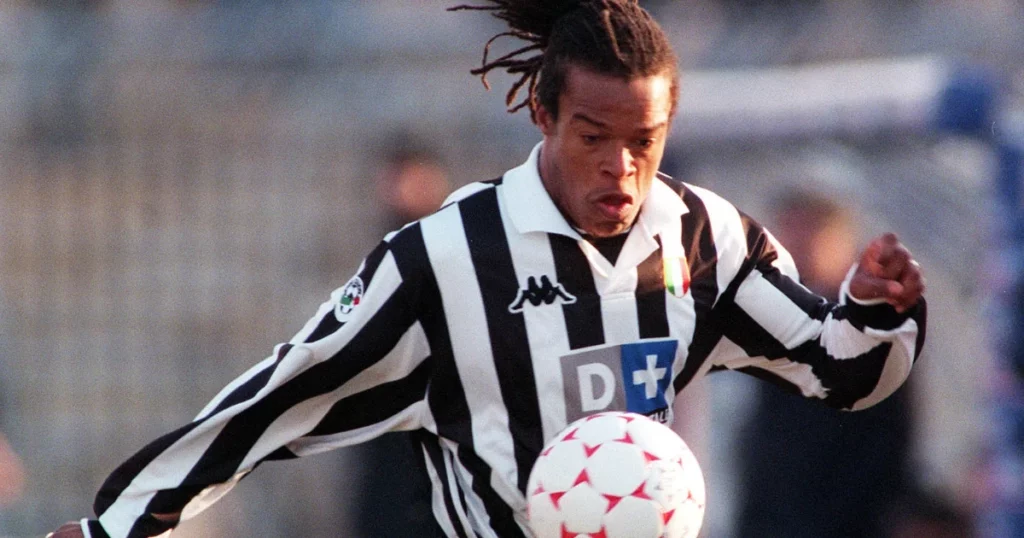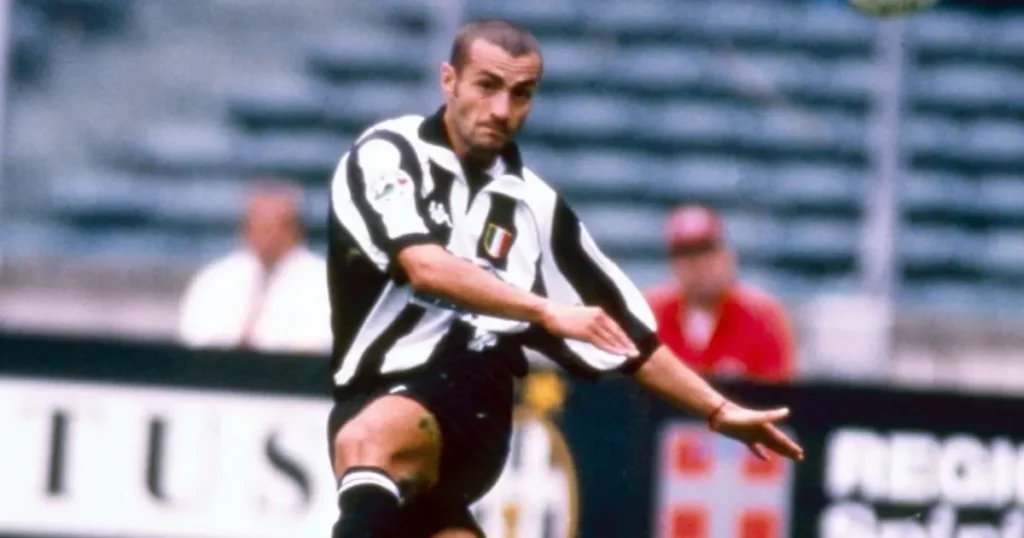Top 10 Players With the Most Red Cards in Football History (Ranked)
Football is a contact sport. Pushing and shoving each other while competing for the ball is in the very fabric of the game. But to keep the game fair, the authorities have determined the extent to which that contact is permissible. If there is a violation, the punishment is awarded. No punishment in football is harsher than a red card. A red card might be awarded for multiple reasons.
The list has striking similarities from top to bottom, as all the players are either defenders or defensive midfielders. The nature of their positions makes them take the necessary risks to put their side out of trouble. These days, you can see that many players hesitate while committing due to fear of cards, but some players didn’t have a second doubt and took some cards for the team. In this article, we will try to answer one of the commonly asked questions: who has the most red cards in football?
List of Players With Most Red Cards in Football History
Here is the list that answers the most frequently discussed question among football fans: who has the most red cards in football history? However, different platforms had different numbers for the players, but to keep the uniformity, we took the help of a football analysis site – Transfermarkt. Lets see who were the goons-cum-players who played the beautiful game of football.
| S No | Player | Red Cards | Club | Country |
|---|---|---|---|---|
| 10 | Fernando Amorebiata | 19 | Retired | Venezuelan |
| 9 | Rafael Márquez | 19 | Retired | Mexico |
| 8 | Gerardo Torrado | 20 | Retired | Mexico |
| 7 | Matteo Contini | 21 | Retired | Italy |
| 6 | Cyril Rool | 22 | Retired | France |
| 5 | Edgar Davids | 22 | Retired | Netherlands |
| 4 | Paolo Montero | 23 | Retired | Uruguay |
| 3 | Felipe Melo | 26 | Retired | Brazil |
| 2 | Sergio Ramos | 30 | CF Monterrey | Spain |
| 1 | Gerardo Bedoya | 46 | Retired | Colombia |
What Does a Red Card Mean in Football
A red card is the highest form of punishment on the field for a player who has violated the playing rules of the game. It immediately ejects the player from the field of play and gives a man disadvantage to his team. This is also called a sending-off. A player who is red-carded has to serve a suspension ranging from 1-3 games based on the severity of the offence.
The red card was invented by an English referee, Ken Aston, in the 1960s. He was inspired by the red traffic signal, which is used for stopping vehicles. Similarly, the red card is used to stop/send off players.
When is a Red Card awarded?
A red card is awarded for multiple reasons. Here are a few of the main reasons:
- A rash tackle to hurt the opposition player.
- Clashing with the opposition players.
- Verbally abusing opposition players or the referee.
- Making obscene gestures towards the opposition players.
- A 2nd yellow card.
- Denying an obvious goal-scoring opportunity.
- Handball to deny a goal.
- Preventing the opposition from restarting play.
Also Read: Explain: What is a red card in football? How does it get overturned?
Impact of a Red Card on a Game
Red cards to different players impact the game in different ways. Also, the scoreline of the game at which a red card is issued makes a world of a difference. These scenarios often test managers and teams in unexpected ways. The way they adapt to these situations tells a lot about their character. If a goalkeeper receives a red card, an outfielder, usually a striker or a winger, is sacrificed for a substitute goalkeeper to enter the fray. Similarly, even if a defender gets sent off, most managers use the same strategy. It was on show this season when William Saliba of Arsenal was sent off and the manager, Mikel Arteta, replaced him by taking Raheem Sterling off.
If a midfielder gets sent off, it prevents the team from having its natural shape in the middle of the park. It severely prevents their attacking capacities. The same is true if a forward is dismissed as well. If a team leading the game is reduced to 10, they tend to go extra defensive, giving the opposition a chance to grab an equaliser. If the game is level-headed when a player receives his marching orders, it’s wide open as any team can spring a surprise. But a team receiving a red card when they are a goal down makes the comeback all the more impossible. They have to prioritise holding the fort first and before having any hope of making a comeback. Liverpool’s victory against Newcastle away in the 2023/2024 season was special for that reason.
Liverpool were down by a goal when their captain, Virgil van Dijk, was sent off. Jürgen Klopp didn’t change his players but tweaked his formation to hold Newcastle at bay. The work ethic of the players on the pitch was excellent, as it allowed them to launch a late comeback. Darwin Nunez came off the bench to score twice late in the game as Liverpool sealed a famous away victory.
Top 10 Players With Most Red Cards in Football History
Now that we have seen the table with the top 10 players with the most red cards in football history and have briefed you about how red cards work. Let’s now take a look at these top players in a much more detailed section:
10. Fernando Amorebiata – 19

At number 10 on our list of players with the most red cards, we have Fernando Amorebieta, who has been shown 20 red cards in his professional club career. The Venezuelan centre-back plied most of his trade in Spain with Athletic Bilbao. Even though he was born in South America, he met the eligibility criteria of the Basque club due to his ancestry.
At an imposing height of 6’4, he strikes fear into the opposition players. His most memorable red card was in the Basque derby against Real Sociedad. Fernando has made 398 club appearances in his career, during which he was shown 142 yellow cards and 19 red cards, which makes him stand among the players who have received the most red cards.
| Appearances | Yellow Cards | Red Cards |
|---|---|---|
| 398 | 142 | 19 |
9. Rafael Marquez – 19

At number 9, we have one of the best Mexican defenders, Rafael Marquez. He is nicknamed “El Kaiser,” which means the Emperor in Greek terminology, and is regarded as one of the best defenders in Mexico’s soccer history. He earned a total of 19 red cards and 150 yellow cards, which places him on our list of players with the most red cards
Rafael Márquez, Mexico’s legendary defender, was a beast for Barcelona and Monaco! With 19 red cards, his fiery style meant he wasn’t afraid to get stuck in. That headbutt in the 2002 World Cup? Pure drama! Despite those red cards, he was seen as a leader in the squad, similar to Sergio Ramos. Additionally, he also won 2 Champions League and 4 La Liga titles. His skill was top-notch, but his temper sometimes stole the show.
| Appearances | Yellow Cards | Red Cards |
|---|---|---|
| 630 | 150 | 19 |
8. Gerardo Torrardo – 20

As they say, “If you haven’t seen Torrardo getting sent off, then your childhood is incomplete.” Torrardo plays as a midfielder for Azul and the Mexican national team. His career has seen him get 20 red cards overall, which makes him stand among players who has the most red cards in soccer.
Playing in three World Cups, he gave everything for his team. Those 20 send-offs show how intense he was on the pitch while defending. Love him or not, Torrado brought fire to every match! In addition to his 20 red cards, he was shown 212 yellow cards in his career.
| Appearances | Yellow Cards | Red Cards |
|---|---|---|
| 589 | 212 | 20 |
7. Matteo Contini – 21

Contini was famous for his two footed lunges and rough challenges. The defender started his career in Milan and spent a couple of seasons in Serie C, the third division league in Italy. Coming from a country with not-so-calm center-backs, Contini is notoriously hot-headed.
He constantly argued with the referees whenever decisions didn’t go his way. Having played for clubs like AC Milan, Parma, Monza, and more, his consistency in irritating the referee with silly fouls makes him one of the players with most red cards in football history.
| Appearances | Yellow Cards | Red Cards |
|---|---|---|
| 534 | 164 | 21 |
Also Read: Liverpool players with the most red cards in Premier League
6. Cyril Rool – 22

Rool is a midfielder who finds himself this high on the list of players with the most red cards in world football. He is well-known for his aggressive nature on the field. Rool is not the one to shy away from fights. He has accumulated 22 red cards along with a staggering 177 yellow cards.
His infamous obscene gesture towards the opponents’ bench of Monaco earned him a red card in 2003. His impulsive defensive performance makes him one of the players with the most red cards and reserves his 6th rank in our list of the top 10 players with the most red cards in football.
| Appearances | Yellow Cards | Red Cards |
|---|---|---|
| 443 | 180 | 22 |
5. Edgar Davids – 22

Fondly called the “Pit Bull”, Edgar Davids started as a midfielder, and he was given this nickname for his aggression and tackling style. Davids started his career in his native country, the Netherlands, before moving to Italy, where he played for AC Milan and Juventus. His travels took him to Spain, where he was notoriously known for his aggressive tackling. It resulted in many send-offs.
The former Dutch international was one of the players with the most red cards in football history, his disciplinary record stands at 106 yellow cards and 22 red cards. But it doesn’t mean he wasn’t a good player; in fact, he is considered one of the best for the position he played.
| Appearances | Yellow Cards | Red Cards |
|---|---|---|
| 581 | 107 | 22 |
4. Paolo Montero – 23

Paolo Montero is termed as the toughest defender he has played against by Ryan Giggs. Such is his combative nature, combined with his talents in the defensive third. Montero holds the not-so-cool record of receiving the most cards in the history of Serie A, making him one of the players with the most red cards in football history.
He headbutted an opponent to receive a second consecutive red card while playing for Juventus. he has played for top Serie A clubs like Juventus and Atalanta and has made more than 436 club appearances, during which he was shown 70 yellow cards and 23 red cards.
| Appearances | Yellow Cards | Red Cards |
|---|---|---|
| 436 | 70 | 23 |
Also Read: What are the Yellow Card, Red Cards, and Penalty Cards in Football?
3. Felipe Melo – 26

The Brazilian’s short temper is known across continents. He spent his time as a defensive midfielder and was also equally adept at center-back. With his professional club career lasting more than 2 decades, the Brazilian defender has played 804 games, during which he was shown 258 yellow cards and 26 red cards.
He was famous for violent tackles and was sent off against Barcelona. Melo assisted Robinho in the quarters of the 2010 World Cup as Brazil took the lead. He then violently stamped on Arjen Robben to receive a red card. It led to intense criticism in native Brazil, and he even got into a fight with the fans.
| Appearances | Yellow Cards | Red Cards |
|---|---|---|
| 804 | 258 | 26 |
2. Sergio Ramos – 27

Often regarded as the best centre-back of all time, Ramos is also known for his reckless side. In his illustrious career, he lifted multiple Champions Leagues, league titles and even a World Cup. The right-back turned centre-back played a crucial part in winning all those titles. In an era where every young footballer wanted to become a striker, Ramos came and changed the trend and made the defensive job look as important as the attack.
His defensive reading is a bit too rash at times, as he takes his frustrations out on opponents. He was sent off multiple times against sworn rivals Barcelona in multiple El Clásicos. Ramos also registered a not-so-good record as a player with most red cards in La Liga’s history. He also often receives a second yellow card after committing silly fouls.
| Appearances | Yellow Cards | Red Cards |
|---|---|---|
| 825 | 244 | 30 |
1. Gerardo Bedoya – 46

For all the fans wondering who has the most red cards in football history? Well, the answer is Gerardo Bedoya. The player with the most number of red cards in world football almost has 1.5 times as many red cards as the second-most red-carded player. The Colombian defensive midfielder has a lot of bite in his tackles and his temper is something that gets flared very soon.
In 2012, Bedoya infamously elbowed Johnny Ramirez and then went for a kick to the head in the Bogota derby. This major offence got him suspended for 15 games, making him one of the players with the most red cards in football history. He was also sent off many times, even after that incident. Bedoya also holds the Guinness World Record for the player with most red cards in football.
| Appearances | Yellow Cards | Red Cards |
|---|---|---|
| 319 | 118 | 46 |
Also Read: Explain: What is a red card in football? How does it get overturned?
FAQs
Q. Who has the most red cards in football history?
A. Gerardo Bedoya has the most red cards in football history with 46 sending-offs.
Q. What are the most red cards in a football match?
A. A record number of 36 red cards were brandished in an Argentine fifth-tier clash between Claypole and Victoriano Arenas. The referee sent off the entire players and coaching staff of both sides as a violent brawl erupted with players going for each other’s throats.
Q. Who is the king of red cards in football history?
A. Sergio Ramos is often termed the king of red cards in football history.
Q. What is the most famous red card in football history?
A. Zinedine Zidane’s headbutt on Marco Materazzi during the 2006 World Cup final is considered the most famous red card in football history.
Q. How many red cards has Ramos received?
A. Sergio Ramos has received 30 red cards.
Q. What happens if you get 5 red cards?
A. If a team receives a total of five red cards during a game, the match is immediately forfeited, and the other team is awarded the win.
Q. How many red cards did Messi get?
A. Lionel Messi has received 3 red cards.
Q. How many red cards Ronaldo has?
A. Cristiano Ronaldo has received 12 red cards.
Q. What if a goalkeeper gets a red card?
A. If a goalkeeper receives a red card, they are immediately dismissed from the game, and the team must play with one fewer player.
